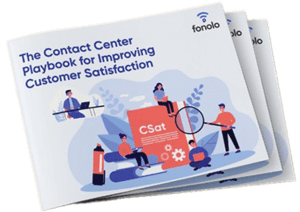 My company develops call-back solutions, so I’m biased towards the positive customer experience they can help companies deliver. But I’ll say it – not everybody trusts companies when they offer a call-back. (This was most recently discussed on LinkedIn’s Contact Center Technology Experts group.)
My company develops call-back solutions, so I’m biased towards the positive customer experience they can help companies deliver. But I’ll say it – not everybody trusts companies when they offer a call-back. (This was most recently discussed on LinkedIn’s Contact Center Technology Experts group.)
In essence, call-backs seem like a great idea: Don’t want to wait on hold? We’ll call you back. But in practice, the experience hasn’t always been so smooth. Let’s talk about why people don’t trust call-backs.
Is this going to work at all?
It’s a valid question – in the early days of call-back (and click-to-call on the web), the odds of a returned call seemed as likely as if you’d left a voice mail. Often calls were lost or not returned, resulting in a complete lack of confidence by users of the service.
When are you going to call me?
As funny as it sounds, at least when you’re on hold, you know that you’re waiting. It can be hard to opt for a call-back when companies don’t tell you just how long you’ll have to wait before the phone rings.
Won’t it be quicker to just wait on the line?
In the past, call-backs (and click-to-call) were often routed to a different group of agents, resulting in longer delays for those who selected the option. There was no trust that “your call will be held in sequence for the next available agent”, as it is on hold.
What if I miss the call?
Unfortunately, many of us have had the experience of a missed call when we opted for a call-back, forcing us to start over by calling a company’s IVR. Even more painful if a company hasn’t announced when they might call us back, so we were prepared. This is exactly the sort of experience that teaches customers that they’re much better to simply stay on the line.
If you’re going to stick me on hold when I answer, why bother with the call-back at all?
Traditionally, a call-back has resulted in answering the phone only to immediately be put on hold. Sure, there may have been a reduction of time spent in the hold queue, but customers have a different expectation when their phone rings – that there’s a human at the other end of the line. When you answer the phone only to be stuck on hold again, the experience is frustrating. I wouldn’t blame anyone for not wanting to repeat it.
Ok, so what’s changed?
A lot! Today’s call-back solutions (like Fonolo) address all of these issues (and more) with a new generation of technology.
Properly implemented, customers can expect to know how long they’ll wait before getting that call-back. They’ll keep their place in line, so there’s no risk to accepting the option. If they miss the call, the call-back system will try them again multiple times, or allow them to re-schedule their call. Finally, when customers answer the phone, a live agent will be on the call, ready to help them – no waiting required.
Call-backs can offer customers a great experience, one that’s trustworthy and a far sight better than spending an extended period of time on hold. Best of all, today this functionally can be extended to any size/type of call-center, with minimal expense.

The Contact Center Playbook for Improving Customer Satisfaction
In this handy playbook, contact center leaders will learn the ins and outs of improving customer satisfaction.